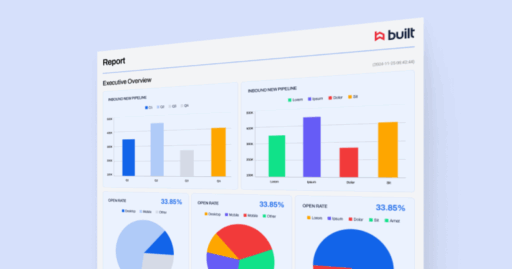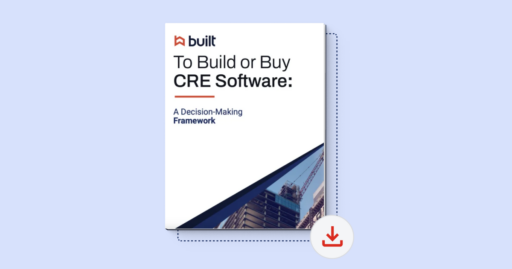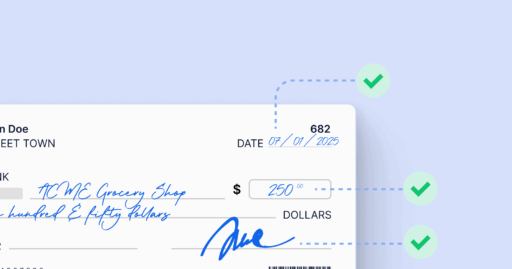Conditional and Unconditional Lien Waivers: What They Mean and When to Use Them

Signing the wrong lien waiver form at the wrong time can cost you. In some cases, you could unintentionally waive your lien rights before a payment even hits your account.
Lien waivers are standard across construction finance, but they carry serious consequences if misused. The core difference between conditional and unconditional lien waivers comes down to timing, risk, and payment verification.
Understanding this difference is critically important, whether you’re submitting a draw, issuing a payout, or funding a project.
This guide breaks down what each waiver is, when to use them, and how to protect your lien rights. From general contractors to lenders and developers, knowing how to navigate lien waiver forms helps prevent disputes, reduce delays, and maintain project momentum.
What Are Lien Waivers?
A lien waiver is a legally binding document used in construction to confirm that a contractor, subcontractor, or supplier has been paid or will be paid for their work or materials. By signing the form, the party waives the right to file a mechanics lien for that amount, which helps keep funding on track and projects moving forward.
In every U.S. state, contributors to a construction project have the legal right to file a lien if they are not paid. These claims attach to the property title and must be resolved before the asset can be sold or refinanced. A lien waiver form offers a proactive way to manage these rights and reduce the risk of payment disputes.
Functionally, a waiver acts like a receipt. It documents who has been paid, how much was paid, and what the payment covers. These forms are frequently exchanged during draw requests and progress payments, making them essential for compliance, funding, and lien law protection.
There are two main types of waiver of lien: conditional and unconditional. The correct form depends on whether payment has already been received or is still pending.
What Is a Conditional Lien Waiver?
A conditional lien waiver is your safest option for payment exchanges. It is used before payment is received and only takes effect once the funds are actually received and have cleared. Look for language like “upon receipt of payment” or “provided payment is received” to confirm that it’s conditional.
- When to use: When submitting an invoice, draw request, or accepting a check that hasn’t cleared yet.
- Protection: It’s a promise to waive rights, conditional on the payment being successful. If the check bounces, your lien rights remain intact.
What Is an Unconditional Lien Waiver?
An unconditional lien waiver is used after payment has been made and verified. By signing, the party immediately and irrevocably gives up the right to file a lien for the stated amount and timeframe.
- When to use: Only after the payment has cleared your bank account and you have full access to the funds.
- Risk: These forms take effect immediately upon signing. If you sign one too early and the payment fails, you lose your lien rights permanently.
Conditional vs. Unconditional: Key Differences
| Feature | Conditional lien waiver | Unconditional lien waiver |
|---|---|---|
| Timing | Submitted before payment is received. | Submitted after payment is received and cleared. |
| When Effective | Only after the specific payment has cleared (the condition is met). | Immediately upon signing. |
| Risk to Contractor | Low. Lien rights remain protected until funds clear. | High. Signing too early waives rights, even if the payment fails. |
| Waiver Statement | “I agree to waive my lien rights upon receipt of this payment.” | “I confirm I have received payment and waive my lien rights.” |
The Four Types of Lien Waivers
Beyond the conditional and unconditional distinction, waivers are also categorized by the scope of work they cover. This creates four main types that construction professionals must manage:
- Conditional progress (partial) waiver: Waives lien rights for work up to a specific date, conditional on receiving the current progress payment.
- Unconditional progress (partial) waiver: Confirms receipt of a specific progress payment and immediately waives lien rights for work up to the stated date.
- Conditional final waiver: Waives all remaining lien rights, including retention, conditional on receiving the final payment for the project.
- Unconditional final waiver: Confirms receipt of all final funds, including retention, and immediately waives all remaining lien rights for the entire project.
How to Choose and Review the Right Construction Lien Waiver
Even small mistakes in lien waivers can lead to lost rights, delayed payments, or compliance issues. Before signing, or asking someone else to, check the following:
- Waiver type (conditional or unconditional): Use a conditional waiver if payment hasn’t been received. Use an unconditional waiver only when payment is confirmed and cleared. Signing the wrong type at the wrong time is the most common and costly mistake.
- Payment amount and scope: The dollar amount and through date should match your invoice exactly. If you’re billing through March 31 for $\$10,000$, the waiver should reflect that. Any mismatch can hold up funding or cause disputes.
- State-specific rules: Some states, like California and Texas, require statutory waiver forms with specific, exact language. Using the wrong version or language could invalidate the waiver entirely.
Want to simplify this process? Try our free lien waiver generator to automatically create compliant forms based on your payment type and state.
Stop the Paperwork Headache: Automate Conditional & Unconditional Waivers
Ditch the spreadsheets! Get one platform to create, send, track, and file all your conditional and unconditional lien waivers instantly.
How Construction Professionals Can Manage Lien Waivers at Scale
Tracking lien waivers across a portfolio is about protecting payments, ensuring compliance, and maintaining project velocity. Here’s how to build a smarter, scalable process.
1. Centralize tracking and storage
Consolidate waiver records in one platform to eliminate version control issues, reduce email churn, and improve visibility for all stakeholders.
2. Automate form generation and routing
Use tools that auto-generate the correct waiver based on payment status, draw cycle, and jurisdiction, reducing manual errors and delays.
3. Ensure legal accuracy
Confirm amounts, dates, and scope before waivers go out. Mismatched data between the draw and waiver form can create serious funding issues or rights exposure.
4. Account for state-specific rules
Some states, like California and Texas, require statutory waiver forms. A smart system flags these variations and ensures compliance.
5. Maintain an audit-ready record trail
Archived, searchable waiver history supports faster funding, dispute resolution, and project closeout, and reduces your legal exposure.
How Built Simplifies Lien Waivers
Managing lien waivers manually slows down funding and introduces risk. Built automates the entire waiver process, collecting conditional waivers with each draw request and triggering unconditional waivers only after payment is confirmed.
This creates a consistent, compliant, and trackable process across every project.
Builders like Rod Heisler have seen the difference firsthand:
“No more chasing down conditional or unconditional waivers after payment. It’s all part of the process in Built. Our subs enter invoices, sign the waiver, and the system handles the rest.” —Rod Heisler, Heisler Construction
With Built, lien compliance becomes automatic, not a back-office burden. That means fewer delays, cleaner audits, and stronger relationships across the payment chain.
Want to see how it works? Talk to our team to learn how Built streamlines lien waivers for lenders, builders, and borrowers.
Conditional and Unconditional Lien Waivers FAQS
What’s the difference between a lien waiver and a lien release?
A lien waiver is a legal document used during the construction payment process to give up the right to file a lien for a specific payment amount. A lien release, on the other hand, is filed after a lien has already been recorded, confirming the debt has been resolved and the lien removed. Waivers are proactive tools used before a lien is filed; releases come after a lien has been filed.
Can I revoke a signed unconditional lien waiver if I haven’t received payment yet?
No. An unconditional lien waiver takes effect immediately upon signing, even if payment hasn’t cleared your bank account. If you sign too early, you may waive your lien rights permanently. Always wait for actual receipt of payment before signing an unconditional waiver form.
Do lien waiver requirements vary by state?
Yes. Waiver language and form requirements differ across states. Some, like California and Texas, require strict statutory wording for both conditional and unconditional lien waivers. Using the wrong waiver form can cause compliance issues or render it legally invalid. Construction professionals should always confirm their state’s rules before submitting a signed waiver.

Mark Murphy leads OGC Sales at Built, where he is responsible for accelerating adoption of payments and standalone solutions purpose-built for real estate owners, developers, and general contractors. He brings deep experience across sales, general management, and operations in technology-driven businesses.
Prior to joining Built, Mark served as General Manager at Apex Service Partners and Operating Executive at Alpine Investors. He also spent over six years at Flexport, where he held multiple leadership roles including General Manager for the South and Northeast regions, and Director & Acting General Manager for San Francisco and Northern California. Earlier in his career, Mark was Chief Operating Officer at Oolong, an INC 500-recognized international trading business.
Mark holds a degree in Mechanical Engineering from Stanford University, where he captained the Varsity Men’s Rowing team.






